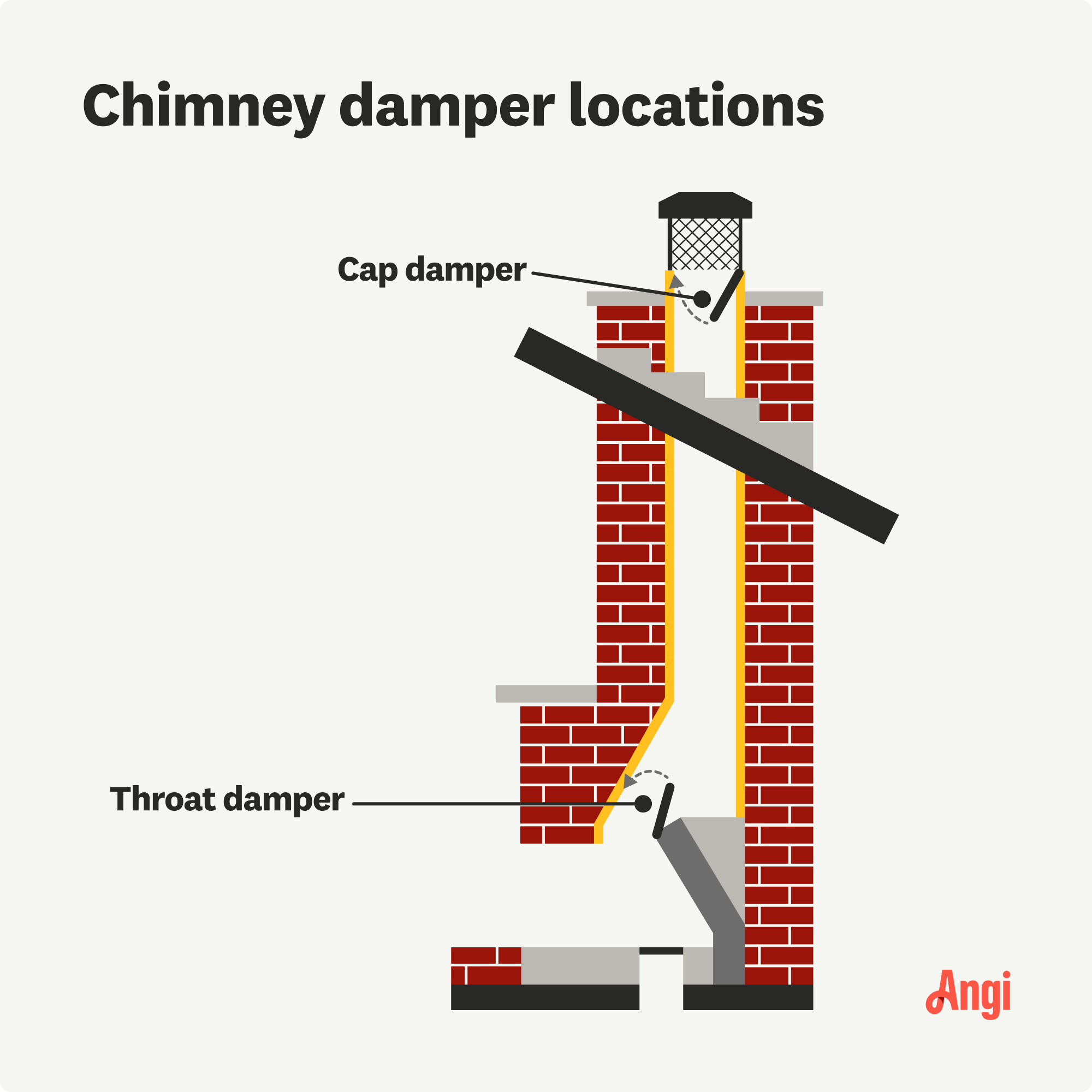
Discover the average chimney tuckpointing cost, key price factors, and expert tips to help you budget and save on your next chimney repair project.
This simple fireplace maintenance task can be completed in an afternoon


A chimney damper is an essential component for venting your fireplace. Removing it is typically the first step before chimney sweeping, and removal may also be necessary if the damper has rust or soot damage. Any DIYer who earned a notch or two on their toolbelt can learn how to remove a chimney damper with guidance. Get ready to roll up your sleeves to ensure your fireplace works safely.
Before starting your project, move or cover furniture near the fireplace to keep it soot-free. Next, clear out your fireplace by removing logs, grates, and decorative items. This will give you room to work. Finally, grab your drop cloth and place it in front of your fireplace to catch debris.

First off, wear your face mask, gloves, and safety glasses. Also, remember that a flashlight and work light are essential for seeing in your dark fireplace. Removing a chimney damper involves cleaning the fireplace and damper, unscrewing the fasteners, and then removing the damper plate from its frame. Here’s a step-by-step guide on how to do it.

Grab your wire brush. Brush away soot and debris from your fireplace and damper. Afterward, sweep it up and place it in a heavy-duty garbage bag. If you own a shop vacuum, use it to remove any remaining debris. Unlike regular household vacuums, shop vacuums have superior suction and won't blow irritants into the air.
The damper is a small door that opens and closes using a bar that enables movement. Typically, the screws holding it in place are on the damper plate itself.
Carefully unscrew the fasteners using your screwdriver, noting where each one is located for easier reassembly if needed later. Remember to hold the damper securely while performing this task to prevent it from dropping suddenly, which could cause serious injury.
Once you remove the screws, gently remove the damper plate out of its frame. To do this, tilt the damper up so it is open. You may find a bracket that holds it into place; if so, remove the bracket and then slip the damper out.
If the damper is stuck because of rust or soot, wiggle it gently back and forth. It will eventually loosen, allowing you to pull it out.

After the damper is free, set it aside. Now, inspect the area. Clean out any remaining debris or soot. This step ensures a clean environment for damper installation. Remember, you want to leave your chimney with a damper. It is an essential feature for maintaining your fireplace's airflow.
DIY could save you money and offer a learning experience. However, it can be time-consuming and risky if you're not careful, potentially leading to damage or safety issues.
On the other hand, hiring a professional ensures the job is done quickly, safely, and correctly, with the added benefit of a thorough inspection by a local chimney repair expert. Remember, working with a pro is always best if you are uncomfortable dealing with sooty and potentially harmful messes or your fireplace has a complex setup.
From average costs to expert advice, get all the answers you need to get your job done.

Discover the average chimney tuckpointing cost, key price factors, and expert tips to help you budget and save on your next chimney repair project.

Your chimney inspection cost will vary based on the type of inspection, how accessible the chimney is, the chimney size, and the number of flues.

The average cost to repair or replace a chimney crown depends on the damage, material, and any other chimney maintenance services bundled into your project.

Learn what a spark arrestor does and why this is essential to your fireplace chimney installation and other combustion systems.

If you want to be sure your chimney is working properly, you’ll need a professional inspection. So who does chimney inspections? We’ve got all the info.

A chimney liner helps make your fireplace safer and more efficient. Here’s a closer look at who can install a chimney liner.